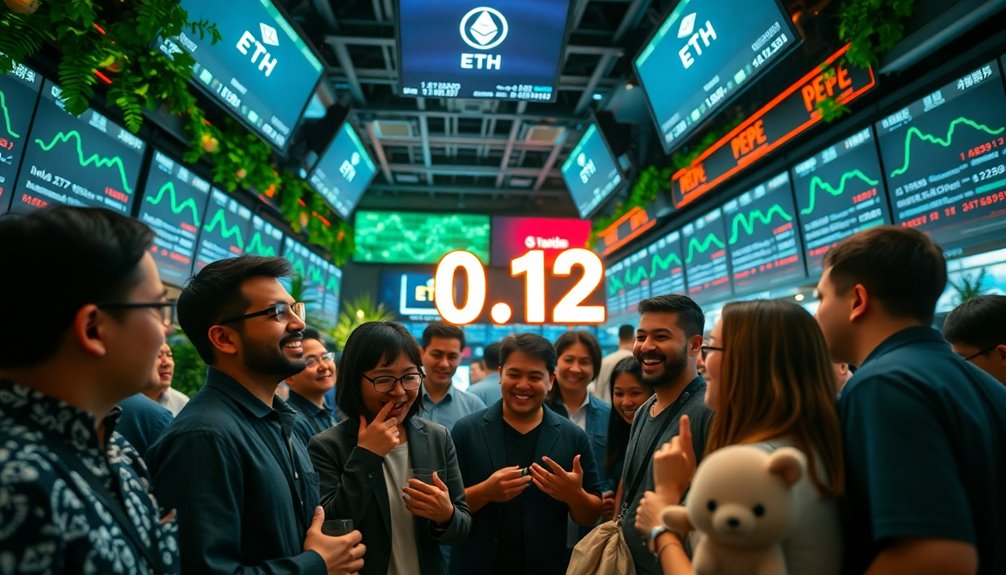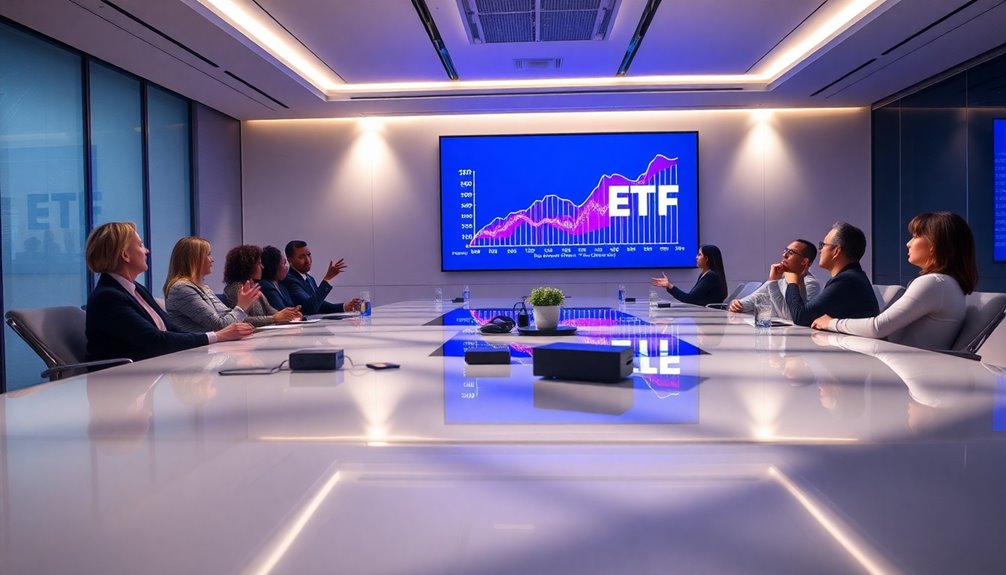When you're trading, knowing the difference between stop orders and stop-limit orders can really impact your strategy. A stop order triggers a market order once a specific price is hit, which helps limit losses but may execute at an unexpected price. Conversely, a stop-limit order activates a limit order at your set stop price, giving you control over the execution price. This can prevent unfavorable trades but may result in missed opportunities if the market moves quickly. Understanding these nuances can enhance your trading decisions, so let's explore what else you can do to refine your strategy.
Key Takeaways
- Stop orders trigger a market order when a specified price is reached, potentially executing at an unexpected price.
- Stop-limit orders activate a limit order once the stop price is reached, ensuring execution at the set limit or better.
- Stop orders provide immediate execution but may not guarantee the desired price, risking larger losses in volatile markets.
- Stop-limit orders offer greater price control, allowing traders to avoid unfavorable trades and mitigate risks from market gaps.
- Both order types have unique execution risks; stop orders may fill unexpectedly, while stop-limit orders can remain unfilled if the market moves quickly.
Order Types Overview

When you're navigating the world of trading, understanding the different types of orders is crucial. You'll encounter market orders, which let you buy or sell a security immediately at the current price, guaranteeing execution but not the price. Limit orders allow you to set a specific price for buying or selling, executing only if the market meets your criteria. Stop orders trigger a market order once a specified price is reached, helping you limit losses or protect profits. Finally, stop-limit orders combine features of both, activating a limit order when the stop price is hit. Knowing these order types helps you make informed decisions and manage your trading strategy effectively. Additionally, incorporating a stop-loss order can further enhance your risk management approach.
Order Mechanics Explained Succinctly
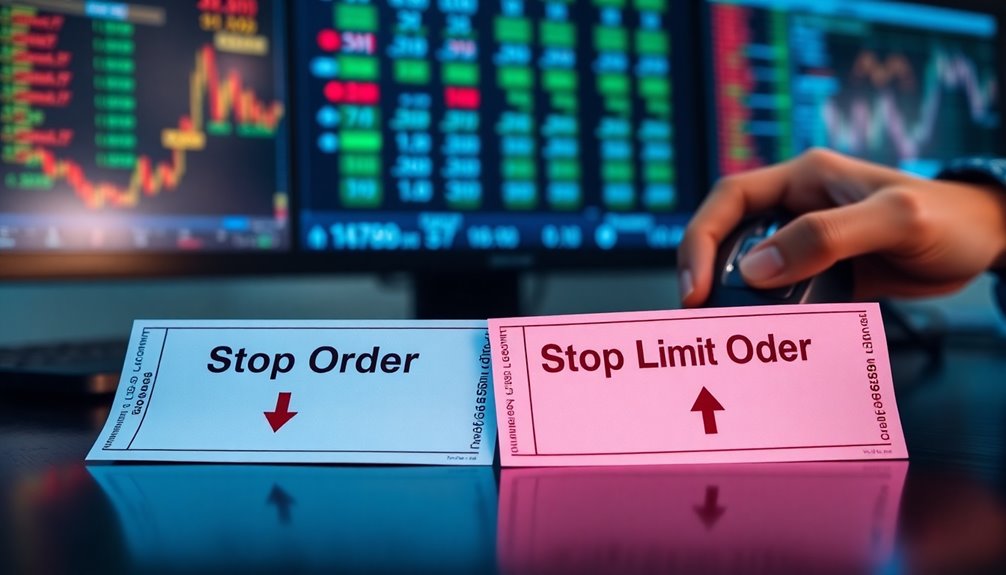
Understanding order mechanics is essential for effective trading, as they dictate how your buy and sell decisions are executed in the market.
With stop orders, a specific price triggers a market order, which can execute at an unexpected price. Limit orders, on the other hand, fill at a specified price or better, but they may not execute if that price isn't available. Stop-limit orders combine aspects of both: they activate a limit order when a stop price is reached, ensuring you get your set price or better. This feature of preset triggers helps protect against significant losses by automatically executing trades based on your defined criteria.
Keep in mind that all orders depend on market conditions, volume, and broker involvement, which can impact whether your trades go through as planned.
Order Execution Process Clarified
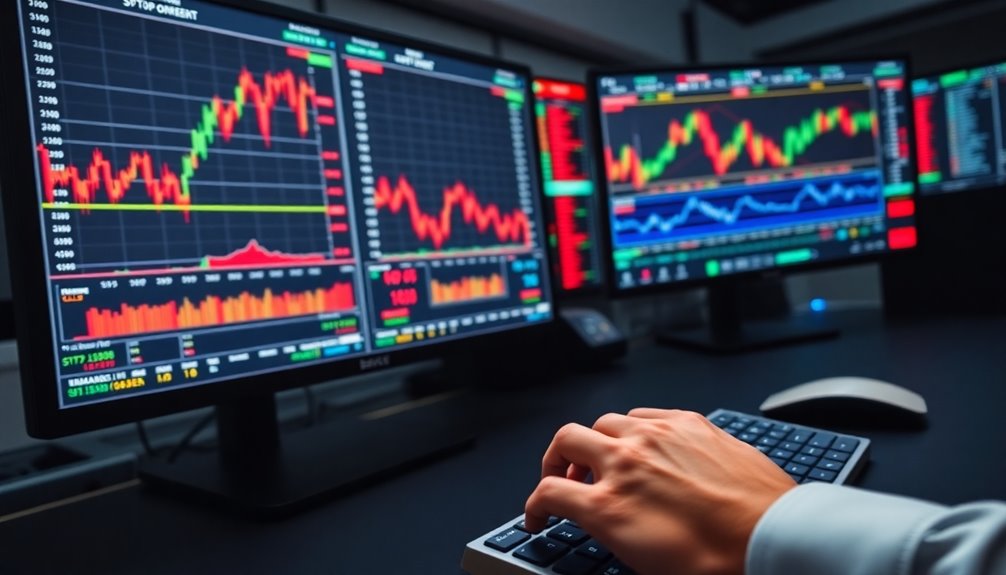
The order execution process is crucial for fulfilling your trading strategies effectively.
First, you place your buy or sell order through your trading terminal, which then transmits it to the trading server. This server routes your order to liquidity providers who assess its viability.
If accepted, your order gets executed at the current market price, depending on the specific conditions and order type. Order execution involves brokers routing orders to liquidity providers, ensuring that your trades are matched efficiently.
Liquidity providers play a key role, confirming whether they can fulfill your order based on available liquidity.
Execution speed is vital; faster execution increases your chances of hitting the desired price.
Understanding this process can significantly enhance your trading efficiency and overall success in the market.
Pros and Cons Summary
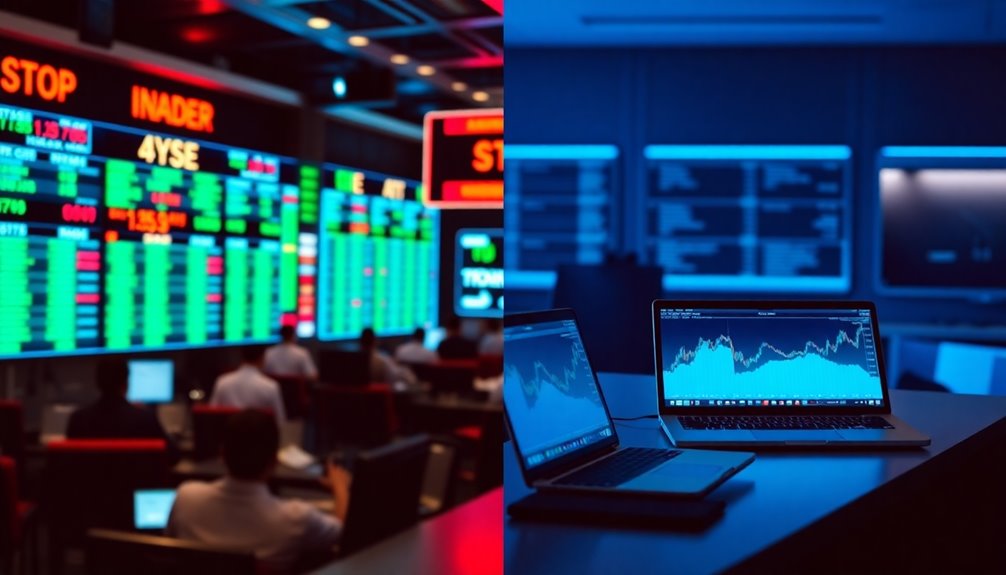
Evaluating the pros and cons of stop-limit orders can help you make more informed trading decisions.
On the plus side, stop-limit orders give you greater price control, allowing you to avoid unfavourable trades and protect against slippage in volatile markets. You can customize your trade setup by selecting specific stop and limit prices, which can help lock in profits. Additionally, this flexibility allows traders to mitigate risks from market gaps.
However, there are drawbacks. Once your stop price is triggered, execution is guaranteed, but the order may fill at a less-than-ideal market price. You also face risks from other investors triggering your stop levels, and commission fees can add up.
Understanding these factors can guide your trading strategy effectively.
Order Type Differences

While both stop orders and stop-limit orders serve to manage trading risks, they operate quite differently in execution and price control.
A stop order triggers a market order once a specific price is reached, executing at the best available price but lacking a guaranteed execution price. This can lead to unfavorable prices, especially in volatile markets. In contrast, understanding the risk management aspect of these orders can significantly impact trading outcomes.
On the other hand, a stop-limit order combines a stop price and a limit price, activating when the stop price is hit. It ensures your trade executes at the limit price or better, giving you more control over the execution price.
This distinction makes stop-limit orders preferable when you want to avoid unexpected price changes during trades.
Market Volatility Impacts Execution
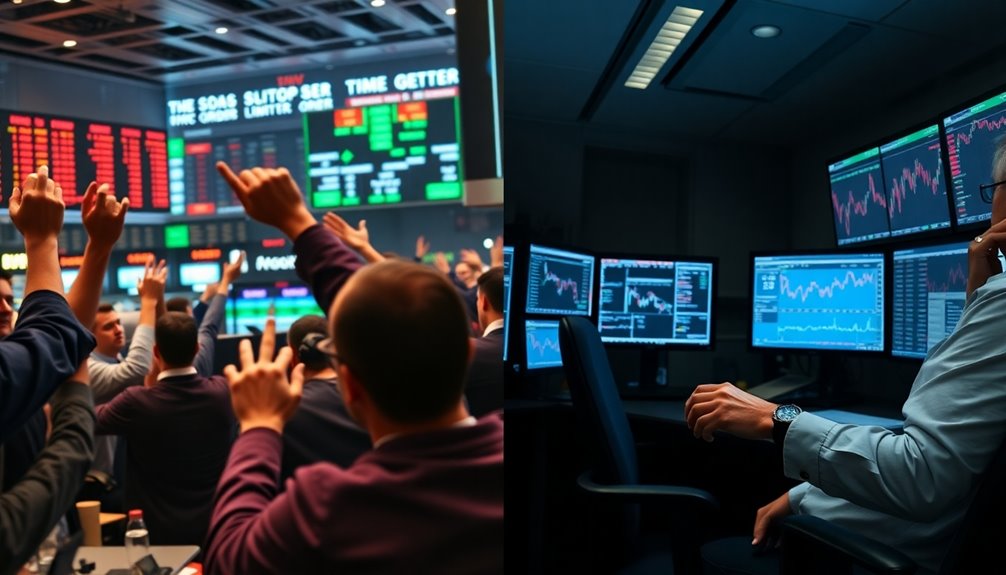
Understanding how market volatility affects execution is vital for effective trading. In volatile markets, stop-loss orders can execute at prices much different from your intended stop price, leading to unexpected losses or reduced gains.
You might find that stop-limit orders get triggered but not filled if the limit price isn't reached, or only partially filled, leaving you exposed to further losses. Gaps in price can also catch you off guard, causing stop-loss orders to execute at unintended prices. Additionally, high volatility can reduce liquidity, making it harder to execute trades at the desired price. Orders can be canceled anytime before execution, so adapting quickly to these changes is crucial to optimize your execution strategy and manage risk effectively.
Algorithmic Trading Innovations
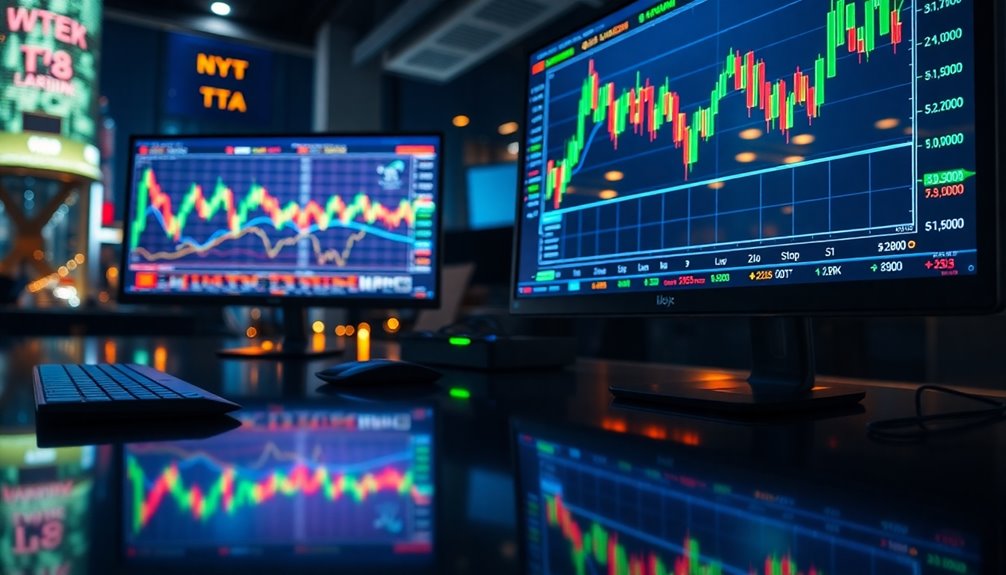
As technology evolves, algorithmic trading innovations are reshaping the landscape of financial markets. You'll find machine learning algorithms that use convolutional neural networks to recognize patterns in financial data, enhancing predictive analytics.
These adaptive algorithms analyze historical data to identify profitable trading signals and execute trades in real-time. High-frequency trading (HFT) powered by AI allows for rapid market adaptation and microsecond transactions, optimizing portfolio management while assessing trading portfolio risks.
Additionally, automated algorithm adjustments refine trading strategies on-the-fly, increasing efficiency and reducing human error. Liquidity detection tools help pinpoint hidden liquidity, allowing you to optimize trade execution and minimize costs. Moreover, the integration of advanced data analytics empowers traders to anticipate market movements and respond to trends proactively. As financial markets evolve, tools such as these become essential for maintaining a competitive edge. As regulators explore the implications of trading technologies, the trump crypto task force details will likely shape future strategies and compliance requirements for automated trading systems.
These innovations collectively enhance your trading performance and provide a competitive edge in today's dynamic market environment.
Use Trailing Stop Orders

Using trailing stop orders can be an effective strategy for managing risk and locking in profits as market conditions change. They help you limit potential losses by automatically adjusting your stop-loss level as the asset's price rises. This means you can capture gains without needing to monitor the market constantly. Plus, it takes the emotion out of trading decisions, allowing you to stick to your strategy. However, be cautious of market volatility; sudden price movements can trigger execution delays or slippage. While they're a cost-effective tool, don't become over-reliant on them—always keep an eye on market trends and adjust your approach as needed to avoid unexpected losses. In volatile markets, trailing stops can be particularly beneficial for profit retention.
Frequently Asked Questions
Can Stop Orders Be Used for Options Trading?
Yes, you can use stop orders for options trading. They help you manage risk by automatically triggering a market order when a specified price is reached.
This means you can lock in profits or limit losses effectively. However, keep in mind that the execution price mightn't exactly match your stop price, especially in volatile markets.
Always consider your trading strategy and market conditions when placing these orders.
How Are Stop Limit Orders Taxed?
Did you know that nearly 50% of investors unknowingly face tax implications when trading?
When you use stop-limit orders, they generally don't trigger direct tax consequences like stop-loss orders do. However, the limit price you set can affect your tax liability if executed.
Remember, if your trade doesn't meet the limit price after being triggered, it mightn't execute, leaving you with potential tax implications to reconsider.
Stay informed!
Do Brokers Charge Fees for Stop Orders?
Yes, brokers typically charge fees for stop orders, just like they do for other types of orders.
These fees can vary based on the brokerage and the fee structure they use. You might encounter fixed fees, variable fees, or a hybrid model.
It's important to check with your broker about their specific fee schedule, especially if you're planning to execute stop orders frequently, as transaction volume can sometimes lead to lower fees overall.
Can I Cancel a Stop Order Anytime?
Did you know that around 40% of investors use stop orders to manage their trades?
You can cancel a stop order anytime before it gets filled, but not if it's already executed. Each brokerage has its own rules, so checking with them is crucial.
To cancel, you can typically do it through their online platform or by contacting customer service directly.
Just keep an eye on your orders to ensure they're aligned with your strategy!
What Happens if My Stop Limit Order Isn't Filled?
If your stop-limit order isn't filled, it could be due to several factors.
The market price mightn't reach your stop price, or if it does, the limit price may not be available. You might encounter insufficient liquidity or existing orders taking precedence.
Additionally, if the order expires or gets canceled, it won't execute. Always monitor market conditions to minimize the risk of unfilled orders and ensure your strategy aligns with the current environment.
Conclusion
In the wild world of trading, choosing between stop orders and stop limit orders is like picking between a rollercoaster and a merry-go-round. Sure, both can take you for a ride, but only one's gonna have you screaming in delight—or in despair—depending on market whims. So, whether you're a thrill-seeker or a cautious carousel rider, just remember: in trading, even the safest bets can feel like a game of roulette. Enjoy the ride, but hold on tight!


